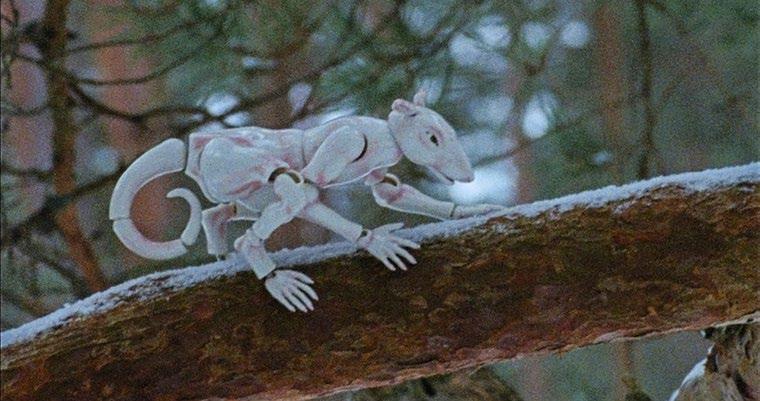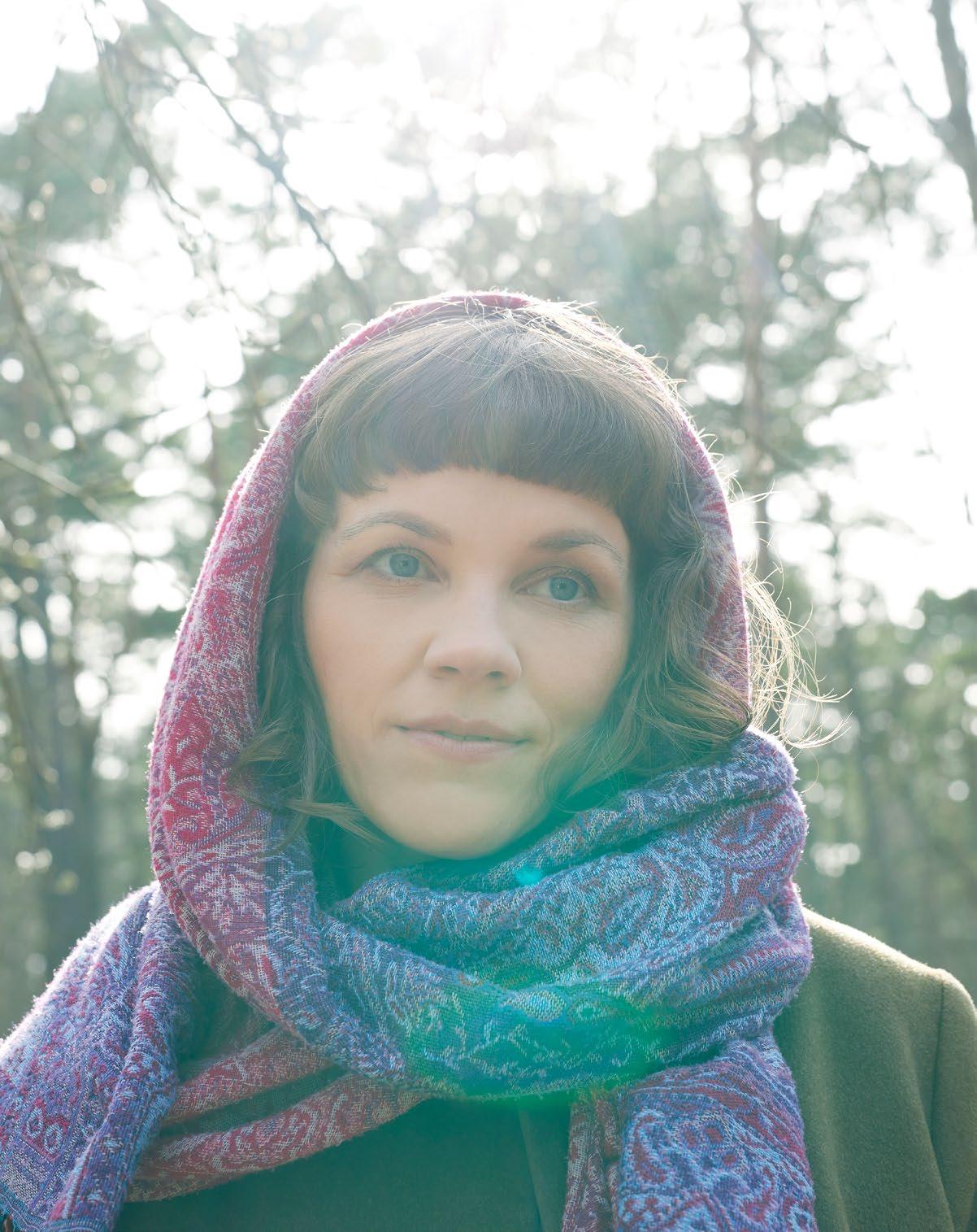
10 minute read
Estonian Film 2024 / 2
Collaborating with Nature
“When I am filming in nature, I’m only one of the directors, nature is the other one,” says animation director and puppet maker Anu-Laura Tuttelberg, who has just wrapped up the second film in her trilogy of the seasons, On Weary Wings Go By. It’s a poetic ten-minute stop-motion film about winter. Anu-Laura shares her five-year journey of making the film.
By Aurelia Aasa Photos by Virge Viertek
You have only recently completed the sequel to your puppet animation Winter in the Rainforest (2019, produced by Nukufilm). While that was shot in the jungle, the new film On Weary Wings Go By (produced by Fork Film) is set by the wintry Baltic and Norwegian Sea. It is not so common to shoot puppet animation outside. Can you describe your process?
When I was making my first film Fly Mill (2012), I didn’t see daylight for half a year. I was always in the dark studio and had no idea what was going on outside –whether it was day or night, winter or summer. It seemed like a wrong approach to life. As we work for a large portion of our lives, the work needs to be moved into an environment you want to be in. It started with the film On the Other Side of the Woods (2014), a film that I shot in the previous studio of Estonian artist Ants Laikmaa that had windows on both sides of the room. During making Winter in the Rainforest and On Weary Wings Go By, I moved outdoors to film. It was a radical step because if you work with sunlight indoors you still have quite firm control over the environment. Natural light has its intricacies but at least it’s warm, it doesn’t rain on your head and the bugs don’t bite.
I saw a photo from the shoot of On Weary Wings Go By on social media, where you pulled cameras and other gear to the seaside on a plastic sledge.
(Laughter). Yes, but it wasn’t a plastic kids’ sledge, but a sledge used by the ice fishermen, perfect tools I discovered during that shoot. I went to fishing and hunting stores to look for equipment for times where one must stay outside, and in the same spot for long periods. Filming outside is no race. You rather resemble a fisherman by the ice hole, toes frozen blue. That’s why the ice fishers’ sledges were ideal. Film equipment is very heavy – camera, computer, stands, puppets, all kinds of clothes, a thermos with soup. I couldn’t have carried it all through the snow. A sledge makes it easy – you just load everything on there, cover it up to protect the baggage from snow and get going.
Shooting conditions in the jungle and in wintry Estonia are completely different. Did they differ emotionally as well?
Yes, those films have a very different atmosphere. Filming in the jungle feels like the film Winter in the Rainforest – lush and abundant. The process is totally chaotic: unbearable heat, mosquitos, bouts of rain, flooding rivers. I’d say that in some ways it was harder to film there than in Estonian winter, because unless you go out in sleet, you can never get completely wet in winter. Being in the jungle is quite different from the idea of the jungle. It seems so pleasant, warm and colourful in the photos, but the real experience involves many more things. The crickets chirp like car alarms at night, not a moment’s silence. Your body is sticky and sweaty from humidity all the time.
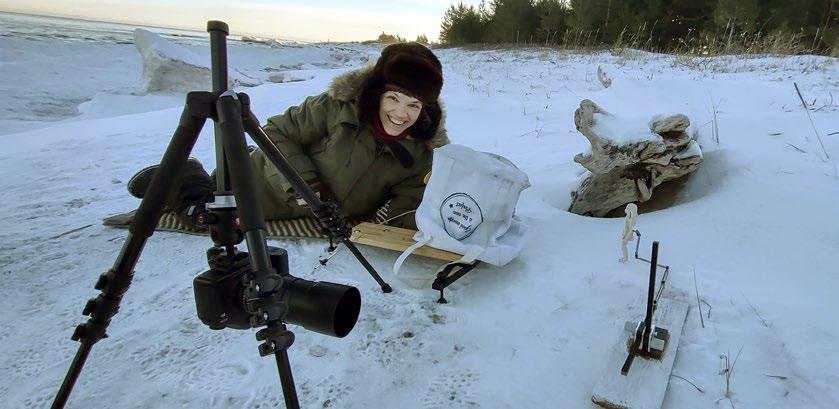
Seems like On Weary Wings Go By is a sort of counter reaction to that.
Completely. Shooting outside in winter, you must take extreme cold into account and survive that, but the weather is constant, and not changing too much. Only on some days we experienced a snowstorm in the middle of the day that whirled our stuff away into the woods, so we had to look for our things in the storm.
Did the film take several winters to complete?
Yes, the first winter was spent on preparation and tweaking the work rhythm. Wake up in the morning, pack, put clothes on, warm some soup, and then off to the woods or to the sea. I animated everything, Marianne drove us around, warmed the soup and held everything together. Some shots were completed, a large part was not. Most of the shooting took place in the second winter in Karepa village on the Northern coast of Estonia. A very kind friend let our film team stay in his summer house for three months in the winter. The summerhouse is very close to the beach so it was easy to go to work every morning. I could live at the location throughout the winter and shoot the whole film efficiently.
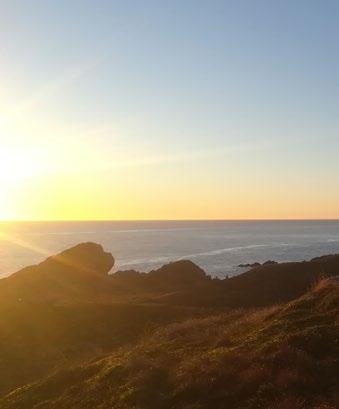
How did you and Marianne Ostrat (who also produced the acclaimed feature documentary Smoke Sauna Sisterhood by Anna Hints) find each other?
When Winter in the Rainforest was in development, I was convinced to submit the project to the Baltic Pitching Forum. I wanted to keep working on my own and the idea of a public pitch didn’t seem very appealing. But I submitted the project and ended up getting selected. On arriving in Vilnius, I found out I would be sharing a hotel room with Marianne Ostrat. That’s how we got acquainted and when I started a new project, I contacted Marianne. She is a producer by trade, but an artist at heart.
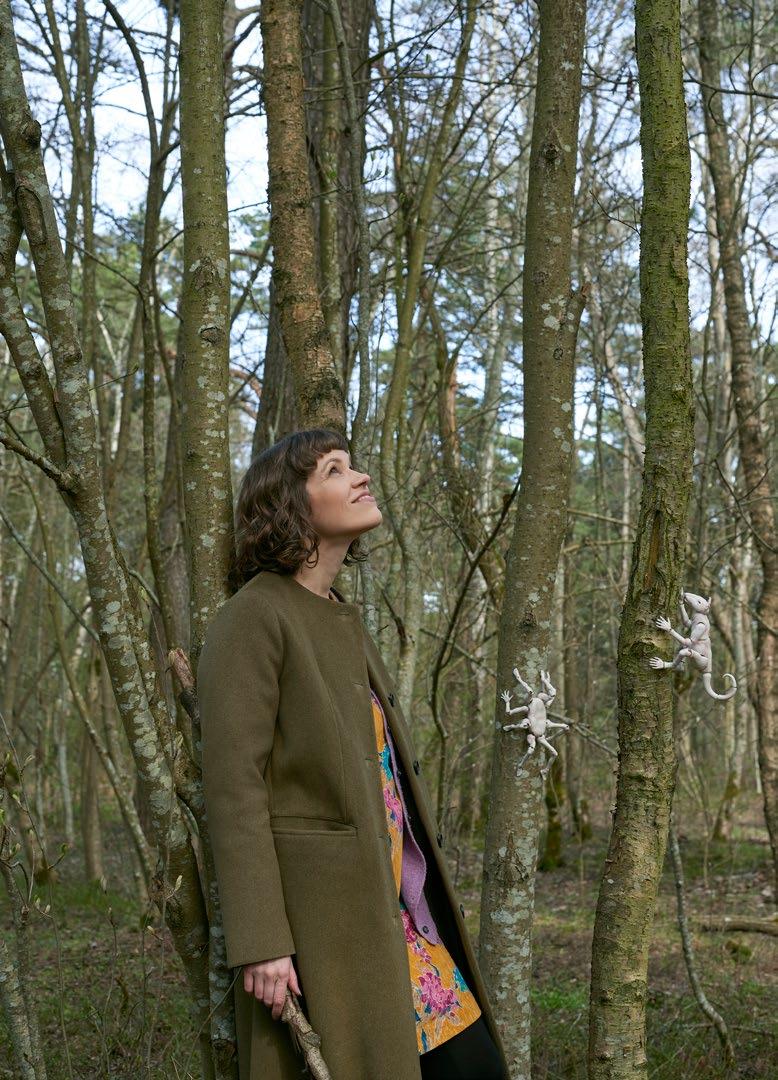
Both Winter in the Rainforest and On Weary Wings Go By are made in collaboration with the Lithuanian studio ArtShot. How does international co-production work in the case of puppet animation?
Our collaboration with ArtShot saved Winter in the Rainforest. We had met with the producer Agnė Adomėnė at the Baltic Pitching Forum and when Winter in the Rainforest was nearing completion, I contacted her. The film was essentially ready but there was no money for post-production. Agnė liked the film and we got funding from Lithuania. We worked so well together with the Lithuanian post-production team that continuing with them for On Weary Wings Go By was only natural.
On Weary Wings Go By was partly filmed in Northern Norway, at the residency on the island of Senja?
The first time I was at Kråkeslottet Art Residency was during the polar night. There was no daylight at all from November to January, just dusk for a couple of hours a day. I had brought ceramic puppets along but there was no light to photograph them. When I tried to set my puppets up on a snowy beach, I understood the intriguing contrast. That’s where the idea for On Weary Wings Go By came from. When we started to make the film with Marianne, we planned to return to Norway. It’s a magical place. The residency – now unfortunately forced out from its original location – was situated in a 19th Century fisherman’s house. There was a glass wall on one side of the building, with a clear view of only the ocean. Some rooms had holes in the floor where you can see the splashing water underneath. Orcas swim by the island, even blue whales have been spotted there. On the other side of the house there is a turquoise bay with white sand. The second time we were there was in November. As the film depicts late autumn – the time when the sun sinks lower, the birds fly away and the winter starts – I wanted to capture the moment on the island when the sun is very low.
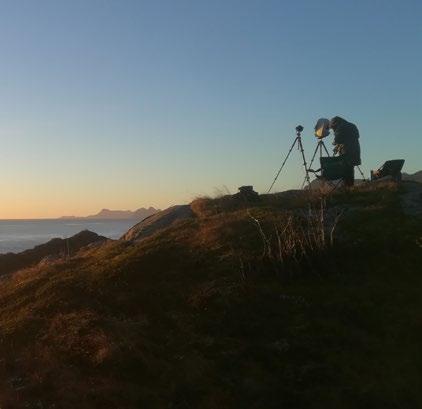
The more I listen to you, the more I hear the animation documentarist in you.
Films made in nature are all documentaries in some way. First, they talk about nature and its rhythms, and second, I am just one of the directors, nature itself is the other. When I take my puppets out into the nature for filming, I can move the puppets but everything around them is out of my control. It’s an inevitability or a bonus, depending on the situation. Sometimes when you are in the jungle or by the sea, you just keep fighting because nothing seems to go your way. Other times it’s the opposite: you set things up, start filming, and nature amplifies everything – the light appears at the right moment, the wind turns in a favourable direction, or it starts snowing. On those rare moments you are in harmony with nature and feel like it’s exactly the right spot to make a film.
You shoot on film. Why?
For me, film is one of the means of expression. Beginning to paint, one must decide if it’s going to be on canvas or cardboard, oil or acrylic. The same with film – you must choose if it is coloured or black and white, grainy or so smooth that you can detect no texture. Film stock is a much better conduit for atmosphere, it has its own vibe. As the material of the puppets is crucial in my films, as well as the way these materials behave, it seems only logical that the film itself is also material, tangible.
You have remained true to porcelain in your last films. For me, porcelain is a crisp but luxurious material. What meaning does it have for you?
Materials express the character of the puppets in my films. I have always been drawn to the old porcelain dolls, but it’s a complicated material to work with. Heavy, fragile, time-consuming. That’s why it’s quite rare in puppet animation. In my first films, I didn’t even use porcelain, but I designed my puppets to look like they were made of porcelain. Later, at a film festival in Mexico, I ended up in a small village where a local eccentric patron of the arts had constructed a garden of surreal sculptures. Four-storey high concrete buildings that had become one with nature. I thought about my porcelain puppets and how the same effect could be applied to them. I decided then that I want to experiment with porcelain in my next films, despite the challenges. Winter in the Rainforest took five years to complete, On Weary Wings Go By took another five.
I’ve always thought of animation as an exercise in patience. Are you a patient person?
Patience and suffering are side by side and sometimes filmmaking is mostly suffering. The trick is to find a working method that you enjoy – for me, it’s out in nature. When I must suffer anyway, I’d rather do it in a pleasant environment. Sometimes in winter you are shaking outside from the cold, -15 degrees (Celsius), you cannot take your gloves off because your hands will freeze, and you can’t do anything with the gloves on either because the tiny puppets need to be moved, or you must push the button on the camera… In other words – it’s all very uncomfortable and cold, the frames don’t come out right, everything is difficult, but you realise in hindsight what a privilege it is to be able to work outside, on the picturesque beach. I have never been on the beach as much as during the last shooting period. So, the suffering is sweet for me, and achieving set goals gives me pleasure. The work would be dull without difficulties. Every film has to surpass the previous ones, otherwise there’s no challenge.
